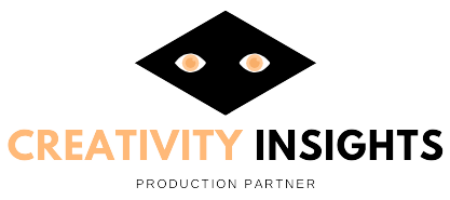In the ever-evolving digital marketing landscape, agencies are constantly searching for ways to streamline their processes, improve efficiency, and boost the effectiveness of their campaigns AI ad tool for agencies. Enter AI-powered advertising tools—a game-changer in the industry. These tools leverage artificial intelligence to optimize ad performance, saving time and resources while delivering impressive results. In this blog post, we’ll explore the top benefits of using AI ad tools for agencies and how they can revolutionize the way you approach digital advertising.
1. Enhanced Ad Targeting and Personalization
One of the most powerful features of AI ad tools is their ability to analyze vast amounts of data to understand consumer behavior. This data-driven approach allows agencies to deliver hyper-targeted ads to the right audience at the right time. By personalizing the content based on individual preferences, demographics, and past interactions, AI ensures that your ads resonate more effectively with your target market.
For agencies, this means significantly better return on investment (ROI) as ads are less likely to be wasted on uninterested users. In a world where customer expectations are constantly rising, AI-driven ad personalization can set your campaigns apart from the competition.
2. Real-Time Optimization
Traditional ad campaigns require manual adjustments to improve performance, often after the fact. With AI, these adjustments happen in real time. AI ad tools continuously monitor your campaigns, making automatic optimizations based on performance data. Whether it’s adjusting bids, tweaking ad copy, or shifting targeting parameters, AI can make quick decisions to keep the campaign performing at its best.
This real-time optimization not only maximizes ad performance but also saves agencies from the headache of constant manual monitoring. It’s like having an entire team of analysts working for you 24/7.
3. Improved Efficiency and Time Savings
For digital marketing agencies, time is money. AI ad tools automate many of the tedious and time-consuming tasks involved in managing ad campaigns, from ad creation and content optimization to performance monitoring and reporting. By removing the manual workload, agencies can focus on higher-level strategy and creative tasks.
In addition, AI tools can analyze multiple campaign variables at once, which would be impossible for a human team to do in real time. This boost in efficiency leads to quicker campaign launches and faster pivots when something isn’t working.
4. Cost-Effective Advertising
Running a successful ad campaign often requires a significant investment in media spend. AI tools help agencies optimize ad spend by ensuring that every dollar is spent wisely. With the ability to predict outcomes based on historical data, AI can identify the most cost-effective strategies and channels for reaching your target audience.
Moreover, AI’s real-time optimization ensures that ad budgets are adjusted dynamically, focusing spend on the highest-performing ads and campaigns. This leads to more efficient use of advertising dollars, reducing wasted spend and increasing overall campaign profitability.
5. Advanced Analytics and Reporting
AI tools generate in-depth, data-rich reports that are far more sophisticated than traditional reporting methods. These reports provide insights not only into the performance of individual ads but also into overall campaign health, customer behavior trends, and long-term ROI.
For agencies, these insights are invaluable when refining future strategies. Rather than relying on guesswork, agencies can use AI to identify what’s working and what’s not, allowing them to optimize campaigns and make more informed decisions moving forward.
6. Creative Testing and Adaptation
With AI, agencies can test multiple creative variations in real-time to determine which one is most effective. This is known as A/B testing, and AI makes it much more powerful by analyzing results quickly and suggesting the best-performing ad elements.
Whether it’s adjusting ad copy, visuals, or calls-to-action, AI can help agencies fine-tune the creative aspects of their campaigns for maximum engagement. This iterative approach allows for a continuous evolution of ad content, ensuring that your campaigns stay fresh and relevant.
7. Scalability
As your client base grows, scaling ad campaigns manually becomes increasingly difficult. AI ad tools make scaling much easier by automating processes that would otherwise require additional human resources. AI’s ability to manage and optimize multiple campaigns simultaneously ensures that agencies can handle an increasing number of clients without sacrificing quality or performance.
Whether you’re running small local campaigns or global marketing initiatives, AI tools can scale your efforts seamlessly, ensuring that all campaigns remain high-performing regardless of their size.
8. Competitive Advantage
In the competitive world of digital advertising, staying ahead of the curve is essential. Agencies that leverage AI ad tools gain a significant competitive advantage by improving the precision, speed, and efficiency of their campaigns. By using data to drive decisions, AI ensures that campaigns are not only more effective but also more innovative.
Agencies that adopt AI-driven strategies are seen as forward-thinking and technologically advanced, which can be a selling point when attracting new clients or retaining current ones.
Conclusion
The adoption of AI-powered ad tools is no longer a luxury for digital marketing agencies; it’s becoming a necessity. These tools enhance targeting, optimize ad spend, improve efficiency, and offer valuable insights that can drive better results. By automating tedious tasks and enabling real-time decision-making, AI allows agencies to focus on what matters most—delivering creative, impactful campaigns that drive business growth.
If you’re looking to stay ahead of the competition and maximize the effectiveness of your digital advertising efforts, embracing AI is the key. With the right AI tools, your agency can achieve greater efficiency, smarter targeting, and ultimately, a stronger bottom line.
